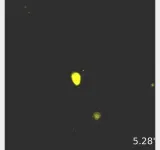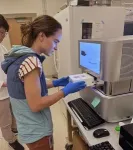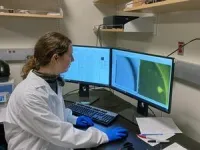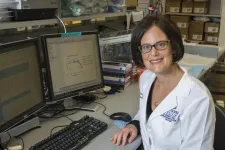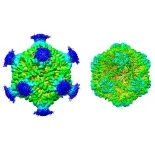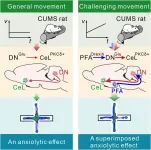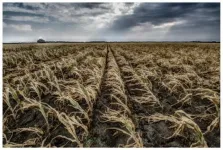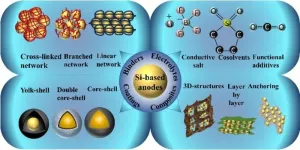(Press-News.org) Unexpected findings have emerged about how and when certain infection-killing white blood cells decide to form memories about their encounters with a pathogen.
It has been known for decades that these cells can turn themselves into durable memory cells that can survive a long time after an initial infection is cleared. They are prepared to quickly recognize and eliminate future intrusions by the same kind of pathogen.
That is one reason people are resistant to some infectious diseases after exposure to or recovery from the illness. Vaccinations also work this way, by teaching the immune system to spot and attack dangerous viruses, parasites or bacteria.
UW Medicine and University of Washington scientists, and their collaborators, wanted to pinpoint exactly when cytotoxic T lymphocytes, a type of immune white blood cell that directly destroys infected cells, decides to form memory during an infection. They used real-time, live imaging to observe these cells over the trajectory of their entire lineage.
Their findings are published Jan. 31 in the journal Immunity from Cell Press. The co-lead authors are Kathleen Abadie and Elisa Clark, both National Science Foundation graduate fellows who recently finished their training in the laboratory of senior author Hao Yuan Kueh, UW associate professor of bioengineering, a joint department in the College of Engineering and the School of Medicine.
“Our experiments revealed an unexpected degree of flexibility in memory decision making, whereby memory T cells are generated at multiple phases during the immune response,” the research team wrote. “After encountering a pathogen, T cells decide early whether to form a memory, or alternatively, to become an effector cell, which has potent cell-killing abilities but is short-lived.”
They added, however, that after the pathogen is eliminated, effector cells can, in essence, change their minds and decide late to join the memory cell pool.
Additionally, the researchers examined the molecular switch that underlies flexible memory formation in these cells. They learned that this switch acts on the key memory regulatory gene Tcf7.
“This switch can turn off Tcf7 early in response to stimulatory signals due to infection,” they explained. “However, importantly, this switch is reversible when these signals are gone, thus enabling cells that have gone down the effector trajectory to reverse their course.”
Why do T cells need leeway in their memory decisions?
“For humans,” Abadie noted, “having some degree of flexibility to change their minds after decisions have been made allows individuals to better adapt to uncertain and changing circumstances.”
The same might be true for T cells to respond effectively to different threats.
An analysis of a mathematical model of T cell decisions, the researchers explained, shows that this flexibility allowed memory to form of both virulent pathogens that demand a large-scale immune response as well as of slow-dividing pathogens that don’t try to overwhelm the immune system, but instead attempt to evade it.
“The ability to make memory fate decisions at multiple junctures during an infection might also allow for greater responsiveness during the evolving situation of an immune challenge,” the researchers added.
These sorts of studies, Abadie and Clark noted, could resolve the longstanding uncertainty surrounding how and when memory cells form.
They hope the findings will open new avenues of research on boosting long-term immune protection against a variety of infectious diseases and cancers.
These studies were performed in collaboration with Jay Shendure, professor of genome sciences at the UW School of Medicine, and Junyue Cao, a former member of his lab, as well as with Armita Nourmohammad, UW associate professor of physics, and Obinna Ukogu, a graduate student in her lab. The Kueh lab team also worked with the lab of Rafi Ahmed at Emory University, together with co-lead author Rajesh Valanparambil, a member of the Ahmed lab.
This study was funded by a National Institutes of Health National Institute of Biomedical Imaging and Bioengineering Trailblazer Awards (R21EB027327), an NIH National Human Genome Research institute grant (R01HG01632-01), National Science Foundation Research Fellowships, an NSF CAREER award (2045054) and startup funds from the Department of Bioengineering and the Department of Physics at the University of Washington, and the Rockefeller University. Shendure is an investigator of the Howard Hughes Medical Institute.
END
When and how immune cells decide to form pathogen memories
During infection, reversible switch permits flexible formation of memory T cells, long-lived blood cells that can remember pathogen encounters and respond upon reinfection.
2024-01-31
ELSE PRESS RELEASES FROM THIS DATE:
Whole blood transfusion improves survival during traumatic bleeding
2024-01-31
(Boston)—Significant bleeding due to traumatic injury is the number one cause of preventable deaths in the U.S., with the majority of deaths occurring within six hours. Emerging evidence suggests that the transfusion of whole blood (blood that is not separated into parts) is associated with a survival benefit compared to the traditional use of blood component transfusion (red blood cells, plasma, and platelets) in these patients.
A new study from researchers from Boston University Chobanian & Avedisian School of ...
Combination drug therapy shows promise for a treatment-resistant cancer
2024-01-31
FOR IMMEDIATE RELEASE
A combination of two cancer drugs could be effective against malignant peripheral nerve sheath tumors (MPNSTs) — soft tissue tumors that are stubbornly resistant to chemotherapy and radiation — according to a laboratory study led by researchers at the Johns Hopkins Kimmel Cancer Center.
Both drugs interfere with cell growth and replication but have different mechanisms of action. Used together, they suppressed the growth of MPNSTs in mouse models of human disease, the researchers found. The findings were published ...
Decarbonizing the world’s industries
2024-01-31
Harmful emissions from the industrial sector could be reduced by up to 85% across the world, according to new research.
The sector, which includes iron and steel, chemicals, cement, and food and drink, emits around a quarter of global greenhouse gas (GHG) emissions - planet-warming gases that result in climate change and extreme weather.
This new study, led by the University of Leeds as part of its contribution to the UK Energy Research Centre (UKERC), found that decarbonising the sector is technically possible with a mix of “high and low-maturity” technologies - those that are tried and tested, along with upcoming tech that is not yet ready to be used in industry.
Lead ...
Brain protein’s virus-like structure may help explain cancer-induced memory loss
2024-01-31
In a rare but serious complication of cancer, the body’s own immune system can start attacking the brain, causing rapid-onset memory loss and cognitive deficits. What triggers this sudden biological civil war was largely unknown.
Now, researchers at University of Utah Health have found that some tumors can release a protein that looks like a virus, kickstarting an out-of-control immune reaction that may damage brain cells.
Their findings published in Cell on Jan. 31, 2024.
A rapid immune attack
Jason Shepherd, Ph.D., associate ...
Study finds brain mechanism for physical exercise improving mood
2024-01-31
"Only exercise can remove all kinds of doubts," Goethe said. Physical exercise is the lubricant between the body and the mind. Alleviation of anxiety by motor activity forms an integral part of our daily life; whether going for a walk to refresh our mind or running excessively in the park to recuperate from a stressful event, we are all well aware of the beneficial impact. In fact, the plain view that exercise can prevent anxiety and depression has been supported by accumulating prospective cohort studies in recent years. Yet, apart from some general interactions between the periphery of our body and our ...
Symbiotic autonomous robot ecosystem enhances safety and efficiency on nuclear facilities decommissioning
2024-01-31
Nuclear facilities, particularly during decommissioning, face significant challenges due to hazardous materials and environments. Traditional methods often rely heavily on human intervention, posing risks and inefficiencies. A groundbreaking research introduces a symbiotic autonomous robot ecosystem, designed to transform nuclear facility decommissioning. This innovative approach leverages a Cyber-Physical System (CPS) coordinated through a digital twin interface, significantly enhancing safety, efficiency, and operational awareness ...
Alleviate the drought in the east Hungarian plains
2024-01-31
Intensive agricultural cultivation and the resulting changes in soil structure cause low humidity in the near-surface air during heat waves in really dry years. As a result, summer cold fronts roar across the Plain without the usual thunderstorms and precipitation, researchers at the Institute of Geography and Earth Sciences at Eötvös Loránd University explain in a review of articles on topics ranging from geodynamics to soil science to meteorology what made the summer of 2022 so severe in the eastern part of the country.
In 2022, the 7-week period starting in mid-June was disastrous for eastern Hungary. Almost no rain fell for weeks, and in the eastern part of the country, ...
Researchers overview recent progress and challenges in silicon-based anode materials for lithium-ion batteries
2024-01-31
Research in recent years displays that several chemical modifications (binders, composite materials, and electrolytes) provide superior stability and enhance electrochemical performance in Si-based anodes in lithium-ion batteries (LIBs). Thus far, several different chemical interactions on structural alterations to Si-based anode materials have been tried to enhance Li+ kinetics, structural stability, and volume development control throughout the delithiation/lithiation process.
Despite significant advancements, Si and Si-based electrodes are still in their infancy and are still far from finding widespread practical use. Si-based anodes face some difficulties, including substantial ...
News on drug-induced skin swelling
2024-01-31
Angiotensin-converting enzyme inhibitors - ACE inhibitors for short - are effective antihypertensive drugs. They block the formation of the hormone angiotensin II, which plays a central role in the development of high blood pressure. On the other hand, these drugs increase the concentration of the vasoactive signaling substance bradykinin. Among other things, this can lead to acute swelling of the skin or mucous membranes. In general, such swellings are not life-threatening. However, if they affect the tongue, throat or larynx, angioedema can be life-threatening for the patient due to the potential risk of suffocation. Research to date suggests that susceptibility to such drug-induced angioedema ...
Innovation on the design, construction, and experiments of OMEGA-based SSPS prototype: The Sun-Chasing Project
2024-01-31
Space solar power satellite (SSPS) is a tremendous energy system that collects and converts solar power to electric power in space, and then transmits the electric power to earth, spacecraft, or moving targets via microwave. It is regarded as one of the most potential ways to solve the problem of energy crisis.
In 2022, a team of researchers from Xidian University in China has completed a full-link and full-system ground demonstration and verification system for an SSPS, named the Sun-Chasing Project. Their study, recently published in Engineering, introduces the design concept of OMEGA 2.0 SSPS, the related key technologies, and the development of ground demonstration ...
LAST 30 PRESS RELEASES:
Press registration is now open for the 2026 ACMG Annual Clinical Genetics Meeting
Understanding sex-based differences and the role of bone morphogenetic protein signaling in Alzheimer’s disease
Breakthrough in thin-film electrolytes pushes solid oxide fuel cells forward
Clues from the past reveal the West Antarctic Ice Sheet’s vulnerability to warming
Collaborative study uncovers unknown causes of blindness
Inflammatory immune cells predict survival, relapse in multiple myeloma
New test shows which antibiotics actually work
Most Alzheimer’s cases linked to variants in a single gene
Finding the genome's blind spot
The secret room a giant virus creates inside its host amoeba
World’s vast plant knowledge not being fully exploited to tackle biodiversity and climate challenges, warn researchers
New study explains the link between long-term diabetes and vascular damage
Ocean temperatures reached another record high in 2025
Dynamically reconfigurable topological routing in nonlinear photonic systems
Crystallographic engineering enables fast low‑temperature ion transport of TiNb2O7 for cold‑region lithium‑ion batteries
Ultrafast sulfur redox dynamics enabled by a PPy@N‑TiO2 Z‑scheme heterojunction photoelectrode for photo‑assisted lithium–sulfur batteries
Optimized biochar use could cut China’s cropland nitrous oxide emissions by up to half
Neural progesterone receptors link ovulation and sexual receptivity in medaka
A new Japanese study investigates how tariff policies influence long-run economic growth
Mental trauma succeeds 1 in 7 dog related injuries, claims data suggest
Breastfeeding may lower mums’ later life depression/anxiety risks for up to 10 years after pregnancy
Study finds more than a quarter of adults worldwide could benefit from GLP-1 medications for weight loss
Hobbies don’t just improve personal lives, they can boost workplace creativity too
Study shows federal safety metric inappropriately penalizes hospitals for lifesaving stroke procedures
Improving sleep isn’t enough: researchers highlight daytime function as key to assessing insomnia treatments
Rice Brain Institute awards first seed grants to jump-start collaborative brain health research
Personalizing cancer treatments significantly improve outcome success
UW researchers analyzed which anthologized writers and books get checked out the most from Seattle Public Library
Study finds food waste compost less effective than potting mix alone
UCLA receives $7.3 million for wide-ranging cannabis research
[Press-News.org] When and how immune cells decide to form pathogen memoriesDuring infection, reversible switch permits flexible formation of memory T cells, long-lived blood cells that can remember pathogen encounters and respond upon reinfection.
